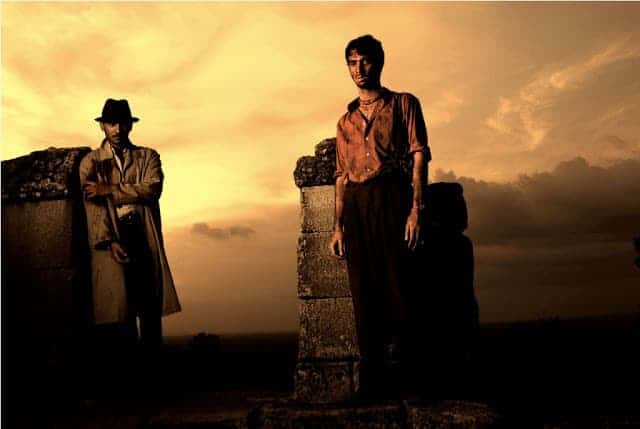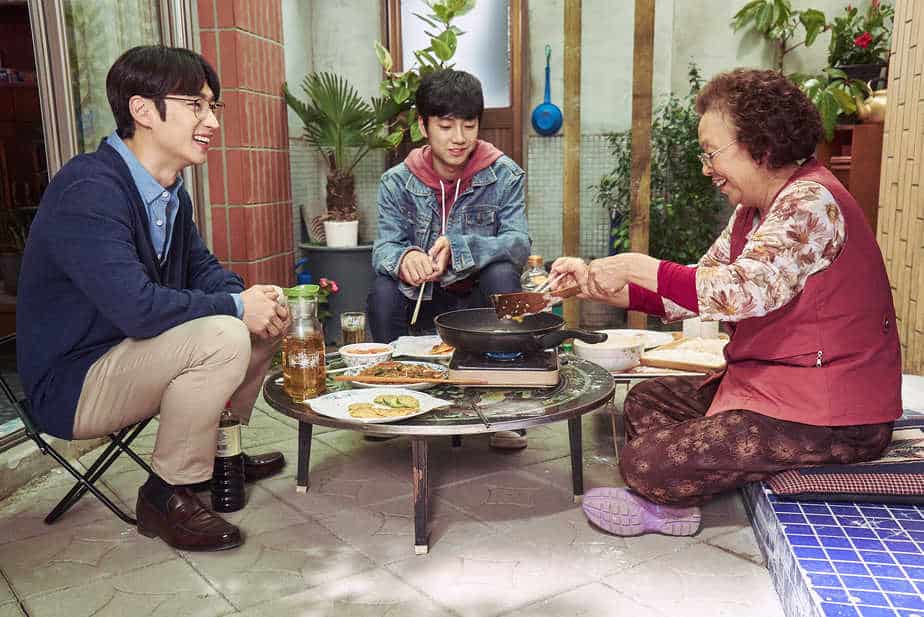When a supporter of a group of Minamata victims going to trail in Osaka approached director Kazuo Hara to make a documentary about the Minamata disease, neither of them realized the enormousness of the project that awaited. “MINAMATA Mandala” started out as a project with a small budget, but it would take over 15 years of filming and 5 years of editing to make, with a final budget 10 times higher than the original private funding. The result is an epic three-part film of 372 minutes long.
MINAMATA Mandala is screening at Japan Society
Minamata is a town in the Kumamoto prefecture on the island of Kyushu. Its inhabitants were primarily fishermen and life in their beautiful surroundings might not always be easy, but it is simple. This changes dramatically in the 50's. First, animals start behaving strangely: cats are dancing, and birds drop dead from the sky. Later, young children exhibit sudden and strange symptoms such as difficulty in walking and speaking, and convulsions. These are the first cases of what will become known as “Minamata disease”, a neurological disorder caused by severe mercury poisoning. It turns out the culprit is a nearby factory of the Chisso group that produces chemicals such as fertilizers. The waste materials, including mercury, are dumped into the sea and since fish is the main food staple in this region, many ingested it in large quantities. By the end of the 50's, about 600 cases are known, and the numbers only increase. It is the start of a long battle for recognition and compensation, which 60 years later is still ongoing.
“MINAMATA Mandala”, the title of the film, refers to the fact that the victims are not in it alone, others such as their families, activists, lawyers, and scientists are equally involved, creating, so to speak, a world around the disease. It is their joint battle and the effects on all of them that are at the core of this project. A multitude of court cases runs as a red thread through the film. However, next to this overall theme each chapter of “MINAMATA Mandala” has a specific focus which is reflected in its title. “Part 1 Rectify the Medical Theory” deals with the scientific aspect of the disease, more specifically the symptoms and qualification. The criteria to be recognized as a Minamata patient, set in the 70's, are based on early assumptions. In retrospect, these turn out to be misconceptions and as a result, a majority of patients don't qualify for certification and the benefits that come with it. Kazuo Hara focuses on Professor Shigeo Ekino and his colleague Tadashi Nimoyami who are testing patients and are working on a wider definition of the illness, its symptoms, and its consequences. For many their work brings hope of finally being recognized.
“Part 2: Passage of Time” shows us how lives were affected not just by the struggle for recognition but also on a personal level. In the long run, Minamata disease has a lasting influence on both patients and their families. “MINAMATA Mandala” tells some sad stories about people that had relatively mild symptoms but are getting worse as age progresses or of those who totally depend on their family for round-the-clock care and survival, posing the question what will happen to them when their parents die. This results in more out-of-court settlements compared to the early years of the Minamata activism. especially when medical costs are reimbursed. But it is not all sorrow and gloom. The Minamata disease does not take away the wish for a normal, happy life filled with love. In the end the victims have the same wishes as other human beings, albeit facing more difficult circumstances.
The long period Kazuo Hara used for filming gave him the opportunity to dive deeper into the everyday life of the people he follows. This gives us a much more nuanced and insightful image not only of the degree of injustice the victims endure, but also of their everyday life.
Time is also of the essence is where it comes to the pollution and its future impact. Environmentalists investigate whether it is safe again to eat fish and inspect the way Chisso cleaned up the mess and the precautions taken against mercury contamination leaking into the sea again. Did they do enough, and will it stand the test of time are questions that come to mind.
“Part 3 Modaegami” Modaegami is a term used in Minamata for someone who shares your sorrow and pain, laments it with you and consoles your soul. This chapter heroes the supporters of the victims; their husbands or wives, families but also the activist that joined the cause, lawyers and scientists trying to put things right. But can they really help or can they, as the modaegami, do not do much more than support the victims and console them. Maybe it is like one of the victims says that winning a court case might give some immediate satisfaction, but it doesn't last, and, in the end, it doesn't change a thing. It doesn't make your health any better.
“MINAMATA Mandala” is a very long film. But the subject and the way Kazuo Hara approaches this, make that it is not too long. Somehow it stresses the long and endless battle of the victims. But also, it gives us an opportunity to see beyond that disease and get to know some of the protagonists a bit better. Most of Kazuo Hara's films tend to be long, but unlike, for instance Wang Bing, Kazuo Hara doesn't just observe. He is present in his films both seen on camera while filming and heard asking questions to help his subjects tell their story in all details. Overall, this clarifies things, and not leaving these questions in while editing, helps to understand the train of thought of the interviewees and some of their answers. In “MINAMATA Mandala” there is only one instance where his intrusions feel awkward, namely when he interviews a woman and the men she falls (platonically) in love with. But even here, this approach serves a purpose because the embarrassment and unease the viewer feels shrink in comparison to how the disease has taken away her prospects for a happy “normal” life.
Kazuo Hara documentary films used to focus on outspoken individuals but more recently with films like “MINAMATA Mandala” he has shifted to the portraying of groups of more ordinary individuals. He's realized that to shake up society and make an interesting film you don't necessarily need a radical individual. A group of ordinary people can serve this purpose just as well, especially when, as is the case with “MINAMATA Mandala”, there is a big human drama connecting them.
In making a film about the “MINAMATA Mandala” Kazuo Hara followed in the footsteps of Noriaki Tsuchimoto, often seen as one of the most important Japanese documentary film makers. In the seventies he was responsible for bringing the plight of the MD victims to the light, not just in Japan but also at festivals around t,he world. Tsuchimoto would make about a dozen films on this subject. Kazuo Hara sort of stepped in when Tsuchimoto became too old. He took over the subject and made it his own. In doing so, Hara had some big shoes to fill, but he's succeeded admirably
















